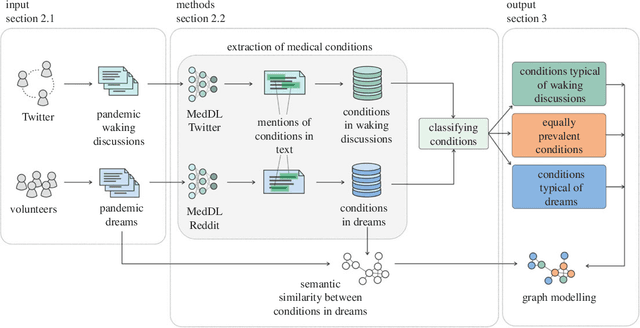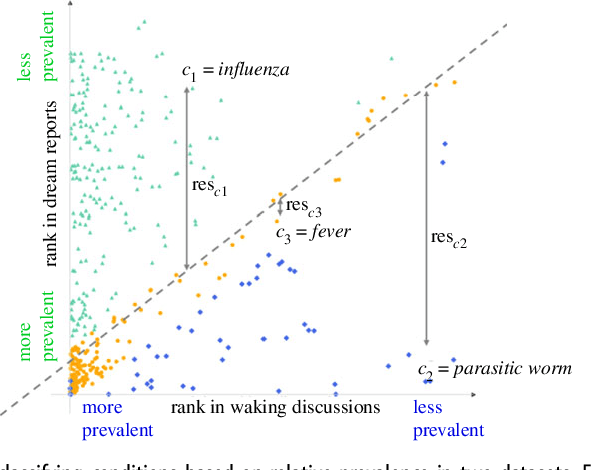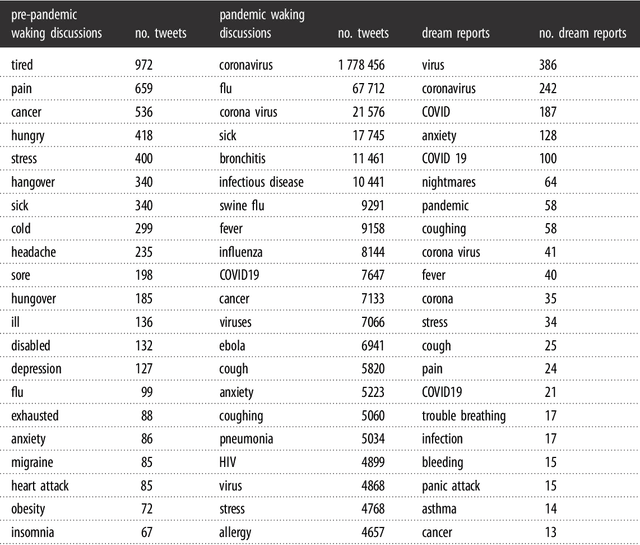Deirdre Barrett
Dream Content Discovery from Reddit with an Unsupervised Mixed-Method Approach
Jul 09, 2023



Abstract:Dreaming is a fundamental but not fully understood part of human experience that can shed light on our thought patterns. Traditional dream analysis practices, while popular and aided by over 130 unique scales and rating systems, have limitations. Mostly based on retrospective surveys or lab studies, they struggle to be applied on a large scale or to show the importance and connections between different dream themes. To overcome these issues, we developed a new, data-driven mixed-method approach for identifying topics in free-form dream reports through natural language processing. We tested this method on 44,213 dream reports from Reddit's r/Dreams subreddit, where we found 217 topics, grouped into 22 larger themes: the most extensive collection of dream topics to date. We validated our topics by comparing it to the widely-used Hall and van de Castle scale. Going beyond traditional scales, our method can find unique patterns in different dream types (like nightmares or recurring dreams), understand topic importance and connections, and observe changes in collective dream experiences over time and around major events, like the COVID-19 pandemic and the recent Russo-Ukrainian war. We envision that the applications of our method will provide valuable insights into the intricate nature of dreaming.
Epidemic Dreams: Dreaming about health during the COVID-19 pandemic
Feb 02, 2022



Abstract:The continuity hypothesis of dreams suggests that the content of dreams is continuous with the dreamer's waking experiences. Given the unprecedented nature of the experiences during COVID-19, we studied the continuity hypothesis in the context of the pandemic. We implemented a deep-learning algorithm that can extract mentions of medical conditions from text and applied it to two datasets collected during the pandemic: 2,888 dream reports (dreaming life experiences), and 57M tweets mentioning the pandemic (waking life experiences). The health expressions common to both sets were typical COVID-19 symptoms (e.g., cough, fever, and anxiety), suggesting that dreams reflected people's real-world experiences. The health expressions that distinguished the two sets reflected differences in thought processes: expressions in waking life reflected a linear and logical thought process and, as such, described realistic symptoms or related disorders (e.g., nasal pain, SARS, H1N1); those in dreaming life reflected a thought process closer to the visual and emotional spheres and, as such, described either conditions unrelated to the virus (e.g., maggots, deformities, snakebites), or conditions of surreal nature (e.g., teeth falling out, body crumbling into sand). Our results confirm that dream reports represent an understudied yet valuable source of people's health experiences in the real world.
 Add to Chrome
Add to Chrome Add to Firefox
Add to Firefox Add to Edge
Add to Edge